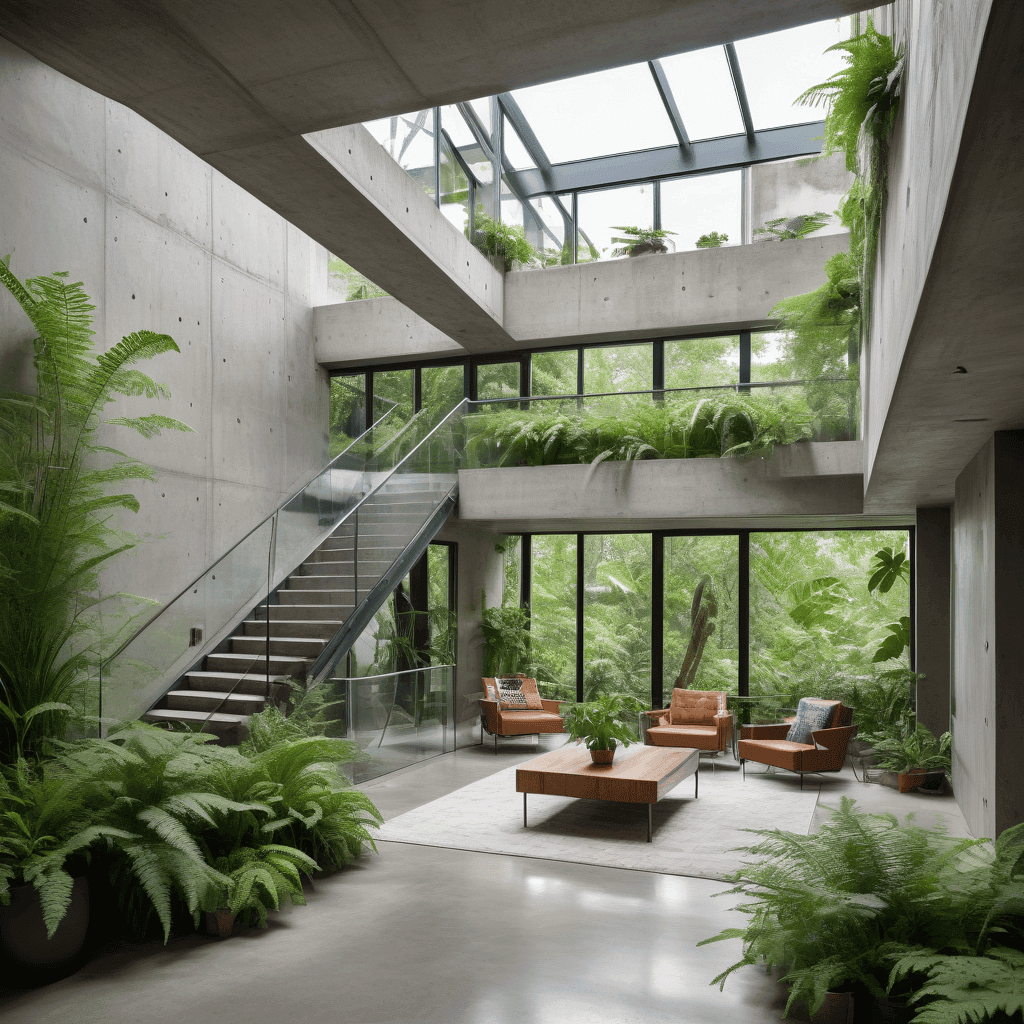Bringing Nature Home: Biophilic Architecture Explained
In a world dominated by steel and screens, biophilic architecture is a return to our roots literally. This article explores how nature-inspired design is transforming buildings into living, breathing spaces. From green walls and sunlit rooms to calming water features and natural materials, discover how biophilic architecture not only looks stunning but boosts well-being, sustainability, and our emotional connection to the world around us. Perfect for curious minds, creative thinkers, and anyone who’s ever felt better under a tree than under a ceiling.

Imagine walking into a building where sunlight floods the room, leaves dance on vertical gardens, and a gentle water feature hums in the background. Feels like nature, right? That’s biophilic architecture where buildings breathe life and nature becomes the blueprint.
In a world of concrete jungles and screen fatigue, biophilic design is a refreshing return to our roots. It’s not just a buzzword, it’s a movement changing how we think, build, and live.
What is Biophilic Architecture?
“Biophilia” means love of life or living things. The term was coined by biologist E.O. Wilson, who believed humans have an instinctive connection to nature. Biophilic architecture takes this idea and brings it to life literally.
It’s about blending buildings with natural elements; plants, sunlight, fresh air, water, and natural materials to create spaces that are healthier, more relaxing, and inspiring.
Why Should We Care? The Amazing Benefits of Biophilic Design
- Boosts Your Mood and Mind
Studying or working in a space with greenery and natural light can reduce stress, increase focus, and even spark creativity. Just looking at a tree outside your window can lift your spirits.
- Saves Energy, Saves the Planet
Biophilic design often uses natural ventilation and lighting, cutting down on electricity use. Features like green roofs and living walls help cool buildings and reduce pollution.
- Feels Better, Works Better
When a building feels calm, cozy, and connected to nature, people enjoy being in it. That means students learn better, employees feel more focused, and everyone just feels more at ease.
- Long-Term Savings
Though it might cost more upfront, nature-infused design often leads to lower utility bills, happier people, and even higher property value.
Key Elements of Biophilic Architecture
At the heart of biophilic design is the idea of inviting nature indoors not just by adding plants, but by creating spaces that feel alive, sensory-rich, and deeply human.
One of the most powerful elements is greenery. From indoor plants and vertical gardens to rooftop forests, vegetation does more than just look pretty, it cleans the air, dampens noise, and brings a sense of calm to our overstimulated environments. Some buildings even use entire living walls that grow and evolve over time.
Natural light is another key ingredient. Architects use large windows, skylights, and open layouts to let daylight pour into rooms, reducing the need for artificial lighting and improving our mood and sleep patterns. Combined with fresh air and ventilation, these spaces often feel more refreshing and alive than traditional buildings.
Biophilic architecture also taps into our love of organic materials and patterns. Wood, stone, bamboo, and clay add warmth and texture, while nature-inspired forms like flowing lines, leaf motifs, or wave-like shapes create a sense of comfort and familiarity. These subtle cues remind our brains of the outdoors, even when we’re inside.
Many designs include soothing water features, such as indoor fountains or reflecting pools. The gentle sound of trickling water has been shown to reduce stress and foster tranquility; making it a favorite feature in both homes and public spaces.
Lastly, outdoor access plays a huge role. Biophilic buildings often blur the line between inside and outside with terraces, courtyards, or balconies that invite people to step out and engage with the natural world directly.
Rather than relying on a single element, it’s the combination of light, air, greenery, materials, and sensory experiences that make biophilic spaces so compelling. When thoughtfully integrated, they create environments that nourish both body and mind, places where we feel grounded, connected, and inspired.
Famous Examples Around the World
- Bosco Verticale, Milan
These vertical forest towers have over 900 trees and thousands of plants on their balconies. It’s like a jungle in the sky!
- Khoo Teck Puat Hospital, Singapore
A hospital that feels like a resort, lush gardens, fish ponds, and rooftop greenery help patients heal faster.
- The Spheres, Seattle
Amazon’s glass domes are filled with over 40,000 plants, turning a tech office into a rainforest escape.
Biophilia Meets Sustainability: A Perfect Match
Biophilic design doesn’t just look good; it does good:
- Green roofs help manage rainwater and cool cities
- Natural light reduces the need for artificial lighting
- Rainwater systems save water for future use
- Recycled and local materials reduce carbon footprints
Together, biophilia + sustainability = smart, healthy buildings for a better future.
How Can You Use This in Your School or Home?
Even small changes make a big difference:
- Add potted plants to your room or study area
- Open windows for fresh air and natural sounds
- Use wood, jute, or stone in your decor
- Choose natural color palettes, greens, browns, and sky blues
- Create a study nook near a window
You don’t need a big budget; just a big heart for nature.
Final Thoughts: A Greener, Kinder Tomorrow
Biophilic architecture isn’t just about beauty. It’s about building with purpose, empathy, and nature in mind. As students, future designers, architects or just curious learners; you have the power to shape the future of our cities and homes.
So next time you step into a building that makes you feel calm, connected, or inspired…
look around. Nature may be the architect.
Let’s not just build buildings; let’s build better relationships with nature. That’s the true blueprint for a brighter, greener world.
